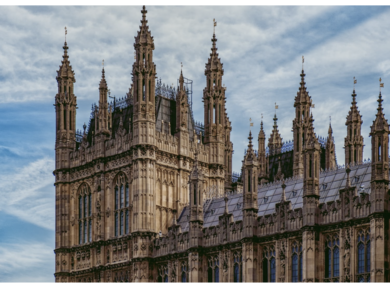Disclaimer: This blog post solely reflects the opinion of the authors and should not be taken to represent the general views of IPPR’s management/ editorial team or those of fellow authors.
The phrase “do something” is the essence of affirmative action. With a history of discrimination which has perpetuated itself into contemporary society in the form of systemic racism, the US, and other nations where minorities have such structural barriers working against them, owe it to its minority groups to “do something” and allow for positive discrimination.
It was President Johnson who recognized that the Civil Rights Act of 1964 did not go far enough, thus coining Affirmative Action to further the equality of minorities in US society and make the change a reality. Affirmative action, by definition “is the effort to rectify the injustice of the past by special policies.”
By this standard, affirmative action remains morally just. Yet, as Pojman highlights, there is a consideration of racial injustices from both sides of the debate surrounding affirmative action, the main difference resting on “the morally proper means to accomplish this goal.”
But when considering the realities of racial discrimination that exists in the US today, I follow President Johnson’s logic in that historical efforts have not done enough; we need more change.
And here are the reasons why:
Underrepresentation of students with BAME backgrounds at the college level remains high, with, for example, black students making up around 50% of the high school graduates in 2015- 16 in Mississippi, but only making up 12.9% of the undergraduate population at the University of Mississippi. Further, around 1/3 of black and Hispanic students go to community college, compared to 22% of white students with the same grades. These disparities in education emulate greater disparities within US society. To go back to the definition as mentioned, the “special policies” are required when such disparities exist, to bridge the gap that history has created. Further, affirmative action may also bring about diversity and greater equality, whilst reducing racial biases as found by the Century Foundation. With this, despite differences in opinions on how to achieve greater equality as mentioned by Pojman, evidence suggests that affirmative action works to achieve the collective goal of achieving a more equal society. Urofsky’s ‘The Affirmative Action Puzzle’ with its search into US history further confirms that affirmative action does work.
There have been attacks on affirmative action policies, which the US Supreme Court has largely resisted, such as with the case of ‘Students for Fair Admissions v Harvard’ in 2019 regarding Asian American students and college admissions. The case for both sides remained strong, and although the court held that Harvard’s admission process “necessary and narrowly tailored to achieve diversity and the academic benefits that flowed from diversity,” Asian American concerns remain significant.
Reynolds summarizes that there is evidence that Asian American students faced “higher hurdles than academically less qualified candidates of other races.” Alex Chen exemplifies common anxieties with regards to his own admissions; “I wish that it didn’t mean that my work didn’t count in the same way as other people’s work.”
This case epitomizes the “myth” promoted by forces that stand against affirmative action, gaining further support recently from the Trump administration. It does not consider that there are vast socio-economic differences between ethnicities and races, and the positive results that affirmative action brings.
Emphasizing this, the “myth” is a “tactic” to create further divisions in minority communities as a whole. Thus, when considering the case for affirmative action, we must also consider that cleavages remain between racial and ethnic groups. However, we must also be careful in that the discrimination one person faces does not take away from the discrimination that another faces; this is not the mentality I am advocating for. Instead, we should consider the socio-economic differences between ethnic and racial groups on the grounds that affirmative action works. To completely stand against affirmative action is to stand against the benefits it has provided for certain racial and ethnic groups.
However, we need to be careful to keep affirmative action to what it is meant to be; to overcome systemic barriers from historical injustices, instead of focusing on a student being able to “bring” something to the university and fulfil a quota system. The case for Asian Americans should also be considered; affirmative action needs to be prevented from ironically becoming a negative force of discrimination for one minority group whilst a positive one for the other minority group, as Pojman concludes.
Further, only 46% of Americans believe that racial discrimination is systemic, which may explain the resistance to affirmative action when considering white anxieties. Eddo- Lodge highlights a “fear of a black planet” which is rooted in some arguments against affirmative action. To be white is to have an “absence” of racial discrimination and the structural barriers which come with it, thus having an absence of being able to understand the barriers minorities have to overcome.
It becomes a moral duty, therefore, to recognize this privilege and use it by supporting policies that overcome some systemic disadvantages that black and minority ethnic citizens face.
The question “did white men suffer as a result of affirmative action?” is complex to answer, yet there remains that there is no evidence that more qualified white people have been hired over minorities or women. This argument stems from “white fragility” to a certain extent, but it remains that this is also to the detriment of minority groups themselves. We need to also be careful with using affirmative action as a form of “tokenism” which has a detrimental impact on both white and minority groups.
Again, affirmative action must be prevented from being used as a negative force; we must keep it to what President Johnson advocated for- to bring about greater change because the legislation at the time had not gone enough.
Affirmative action is a force for good but has the potential to become the opposite of what it is in place for. To overcome this, we need to collectively recognize its potential vices and prevent it from reaching this point- to move away from the potential tokenism it can create, and the discrimination it can cause for other minority groups. Its irony is clear, yet its overall advantages mean it should be implemented as much as possible to help overcome systemic barriers against minorities in society.
As mentioned, we need to “do something” instead of allowing systemic and structural forces of racism to prevent certain groups from achieving their full potential.
If we had a completely equal society, do you truly believe our elites in society and our universities would be mainly white dominated men?
We need affirmative action to bridge this gap.
Bibliography
Carreira, D. (2018). The role of white people in the fight against racism. [online] Sur – International Journal on Human Rights. Available at: https://sur.conectas.org/en/the-role-of white-people-in-the-fight-against-racism/ [Accessed 21 Feb. 2021].
Dann, C. (2020). American views on race relations have changed dramatically, NBC News/WSJ poll finds. [online] NBC News. Available at: https://www.nbcnews.com/politics/meet-the press/poll-more-voters-acknowledge-symptoms-racism-disagree-about-its-causes-n1234363. [Accessed 21 Feb. 2021].
Kang, J.C. (2019). Where Does Affirmative Action Leave Asian-Americans? The New York Times. [online] 28 Aug. Available at: https://www.nytimes.com/2019/08/28/magazine/affirmative-action-asian-american-harvard.html. [Accessed 23 Feb. 2021].
LexisNexis (n.d.). Students for Fair Admissions, Inc. v. President & Fellows of Harvard Coll. (Harvard Corp.) | Case Brief for Law School | LexisNexis. [online] Community. Available at: https://www.lexisnexis.com/community/casebrief/p/casebrief-students-for-fair-admissions-inc-vpresident-fellows-of-harvard-coll-harvard-corp [Accessed 24 Feb. 2021].
Marcus, J. (2019). Facts about race and college admission. [online] The Hechinger Report. Available at: https://hechingerreport.org/facts-about-race-and-college-admission/. [Accessed 22 Feb. 2021].
Maxwell, C. and Garcia, S. (2019). Center for American Progress. [online] Center for American Progress. Available at: https://www.americanprogress.org/issues/race/news/2019/10/01/471085/5-reasons-support affirmative-action-college-admissions/. [Accessed 24 Feb. 2021].
Menand, L. (2020). The Changing Meaning of Affirmative Action. [online] The New Yorker. Available at: https://www.newyorker.com/magazine/2020/01/20/have-we-outgrown-the-need for-affirmative-action. [Accessed 22 Feb. 2021].
Pojman, L.P. (1992). The Moral Status of Affirmative Action. Public Affairs Quarterly, [online] 6(2), pp.181–206. Available at: https://www.jstor.org/stable/40435805 [Accessed 21 Feb. 2021].
Reni Eddo-Lodge (2018). Why I’m no longer talking to white people about race. London: Bloomsbury Publishing.
Sherrer, K. (2018). What Is Tokenism, and Why Does It Matter in the Workplace? [online] Vanderbilt Business School. Available at: https://business.vanderbilt.edu/news/2018/02/26/tokenism-in-the-workplace/. [Accessed 22 Feb. 2021].
by Hellin Birbalta
Hellin Birbalta is a first year student studying Politics and International Relations at University College London. Her interests include writing about human rights, international conflict and violence, amongst other global issues.






